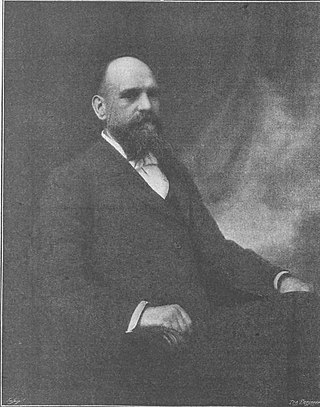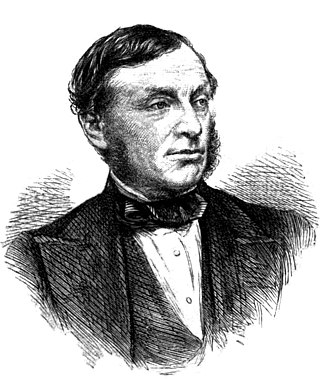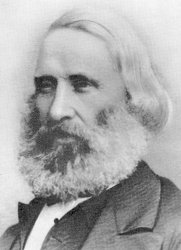Related Research Articles

The Great Western Railway (GWR) was a British railway company that linked London with the southwest, west and West Midlands of England and most of Wales. It was founded in 1833, received its enabling Act of Parliament on 31 August 1835 and ran its first trains in 1838 with the initial route completed between London and Bristol in 1841. It was engineered by Isambard Kingdom Brunel, who chose a broad gauge of 7 ft —later slightly widened to 7 ft 1⁄4 in —but, from 1854, a series of amalgamations saw it also operate 4 ft 8+1⁄2 in standard-gauge trains; the last broad-gauge services were operated in 1892.

The London and North Western Railway was a British railway company between 1846 and 1922. In the late 19th century, the LNWR was the largest joint stock company in the world. In 1923, it became a constituent of the London, Midland and Scottish (LMS) railway, and, in 1948, the London Midland Region of British Railways. The LNWR's main line remains today as the English and Welsh portions of the West Coast Main Line.

William Dean was an English railway engineer. He was the second son of Henry Dean, who was the manager of the Hawes Soap Factory in New Cross, London. William was educated at the Haberdashers' Company School. He became the Chief Locomotive Engineer for the Great Western Railway from 1877, when he succeeded Joseph Armstrong. He retired from the post in 1902 and was replaced by George Jackson Churchward. He designed famous steam locomotive classes such as the Duke Class, the Bulldog Class and the long-lived 2301 Class.
The Rhymney Railway was a railway company in South Wales, founded to transport minerals and materials to and from collieries and ironworks in the Rhymney Valley of South Wales, and to docks in Cardiff. It opened a main line in 1858, and a limited passenger service was operated in addition.
Chief mechanical engineer and locomotive superintendent are titles applied by British, Australian, and New Zealand railway companies to the person ultimately responsible to the board of the company for the building and maintaining of the locomotives and rolling stock. In Britain, the post of locomotive superintendent was introduced in the late 1830s, and chief mechanical engineer in 1886.
George Jackson Churchward was an English railway engineer, and was chief mechanical engineer of the Great Western Railway (GWR) in the United Kingdom from 1902 to 1922.

Sir Daniel Gooch, 1st Baronet was an English railway locomotive and transatlantic cable engineer. He was the first Superintendent of Locomotive Engines on the Great Western Railway from 1837 to 1864 and its chairman from 1865 until his death in 1889.

The first Locomotives of the Great Western Railway (GWR) were specified by Isambard Kingdom Brunel but Daniel Gooch was soon appointed as the railway's Locomotive Superintendent. He designed several different 7 ft 1⁄4 in broad gauge types for the growing railway, such as the Firefly and later Iron Duke Class 2-2-2s. In 1864 Gooch was succeeded by Joseph Armstrong who brought his standard gauge experience to the workshops at Swindon. To replace some of the earlier locomotives, he put broad gauge wheels on his standard gauge locomotives and from this time on all locomotives were given numbers, including the broad gauge ones that had previously carried just names.
Wolverhampton railway works was in the city of Wolverhampton in the county of Staffordshire, England. It was almost due north of the city centre, and is commemorated with a small display of level crossing gates and a plaque. Known as the Stafford Road Works, it was opened by the Shrewsbury and Birmingham Railway in 1849 to maintain bought-in locomotives.

Swindon Works was opened by the Great Western Railway in 1843 in Swindon, Wiltshire, England. It served as the principal west England maintenance centre until closed in 1986.
The GWR 0-6-0PT, is a type of steam locomotive built by the British Great Western Railway with the water tanks carried on both sides of the boiler, in the manner of panniers. They were used for local, suburban and branch line passenger and goods traffic, for shunting duties, and as banker engines on inclines. The early examples, such as the 1901 and 2021 classes, were rebuilt from saddle or side tanks when the locos received a Belpaire firebox – this type of firebox has a square top and is incompatible with a curved saddle tank. This process mostly took place during the tenure at Swindon Works of George Jackson Churchward. Only a very small number of saddle tank locomotives escaped rebuilding as panniers, notably the 1361 Class built new under Churchward in 1910, by which date a few of the 1813 Class had already been rebuilt as pannier tanks.

Joseph Armstrong was an English locomotive engineer and the second locomotive superintendent of the Great Western Railway. His younger brother George and one of his sons also became outstanding engineers in the employment of the GWR.
George Armstrong was an English railway engineer. He was in charge of standard gauge steam locomotives for the Great Western Railway at Stafford Road Works, Wolverhampton, from 1864 to 1897. He was the younger brother of his colleague Joseph Armstrong, but thanks to the special requirements of the GWR at a time when it was split in two by the broad and standard gauges, the brothers were able to work largely independently of each other. George is best remembered for his 0-4-2 and 0-6-0 tank engines; these were long-lived, and even when life-expired they were replaced by Collett and Hawksworth with remarkably similar locomotives, the well-known 1400, 5700 and 1600 classes.
William Grindley Craig was a Scottish railway engineer and designer who was locomotive superintendent of the Manchester, Sheffield and Lincolnshire Railway from 1854–1859. He was present, as an expert witness, at an enquiry into the Round Oak rail accident in 1858. He was succeeded by Charles Sacre.
Edward Wilson was a civil and locomotive engineer, notable for his work on the development of railways in the nineteenth century.
The Shrewsbury and Hereford Railway was an English railway company that built a standard gauge line between those places. It opened its main line in 1853.
The Daniel Gooch standard gauge locomotives comprise several classes of locomotives designed by Daniel Gooch, Superintendent of Locomotive Engines for the Great Western Railway (GWR) from 1837 to 1864.
Between 1854 when the Shrewsbury and Chester and Shrewsbury and Birmingham Railways were absorbed by the Great Western Railway, and 1864 when he moved south to Swindon Works, Joseph Armstrong occupied the post of the GWR's Locomotive Superintendent, Northern Division, at Wolverhampton Works. For ten years the task of providing new locomotives for the GWR's newly acquired standard gauge lines fell jointly to Armstrong and to his superior Daniel Gooch, the railway's principal Locomotive Superintendent who was based at Paddington.
References
- Allen, Cecil J (1948). British Railway Locomotives. Ian Allan.
- MacDermot, E T (1927). History of the Great Western Railway, volume I 1833–1863. London: Great Western Railway.
- MacDermot, E T (1931). History of the Great Western Railway, volume II 1863–1921. London: Great Western Railway.
- The Locomotives of the Great Western Railway, Part 3: Absorbed Engines 1854–1921. The Railway Correspondence and Travel Society. 1956.
- Swindon Steam 1921–1951. Ian Allan. 1974.
